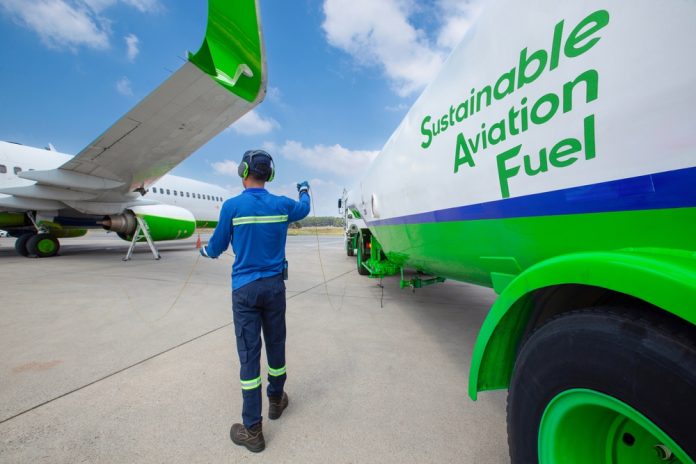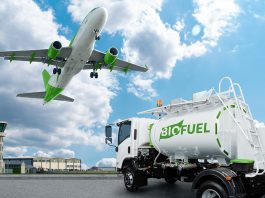The U.S. Department of Energy (DOE) recently released its ‘Pathways to Commercial Liftoff: Sustainable Aviation Fuel’ report, outlining the transformative potential of sustainable aviation fuel (SAF) to reduce aviation emissions significantly.
The report underscores the potential role of sustainable aviation fuel in achieving near-term decarbonisation and offers a roadmap for the United States to emerge as a leader in SAF production by 2030.
Key findings and SAF production milestones
According to the DOE’s report, announced projects could deliver over three billion gallons of sustainable aviation fuel per year by 2030, which would satisfy more than 10% of the nation’s jet fuel demand.
The scale-up aligns with the U.S. SAF Grand Challenge target and would require $44bn in investments while supporting an estimated 70,000 jobs across the SAF value chain.
This ambitious growth is achievable if production technologies and feedstocks available today are rapidly deployed alongside innovations in SAF technology and feedstock options to ensure that all United States jet fuel could be sustainable by 2050.
Addressing economic barriers
Despite its promising benefits, SAF’s high cost remains a significant hurdle to widespread adoption, as it currently costs two to ten times more than conventional jet fuel.
Government incentives and subsidies have helped narrow this price gap, but sustained price premiums have deterred voluntary airline uptake.
The DOE report emphasises that creating long-term offtake agreements is crucial to improving financing and securing investments.
By extending these agreements and incorporating SAF into Scope 3 emissions standards, the aviation sector could establish demand certainty, thus stabilising financing terms and bolstering investor confidence.
Policy alignment and international cooperation
For sustainable aviation fuel to reach its full potential, international collaboration will be essential.
The DOE calls for synchronised global policies to ensure alignment on carbon accounting, feedstock traceability, and book-and-claim systems.
These measures would not only promote transparency in SAF’s environmental benefits but also encourage broad adoption among airlines worldwide.
Financial commitments to drive SAF expansion
Complementing its SAF Liftoff report, the DOE’s Loan Programs Office (LPO) recently committed $2.9bn in conditional loan guarantees to two large-scale SAF production facilities.
One project in Montana will use vegetable oils and greases to produce SAF, while another in South Dakota plans to convert low-carbon corn to jet fuel using renewable power and carbon capture technology.
Both projects aim to scale domestic SAF production and drive down emissions across the fuel’s lifecycle.
Charting a path for clean aviation
The DOE’s report highlights the steps needed to create a sustainable aviation future, from scaling production to fostering policy alignment.
If sustainable aviation fuel production can overcome current economic barriers, the United States is poised to lead in the global SAF market, accelerating the clean energy transition in aviation.









